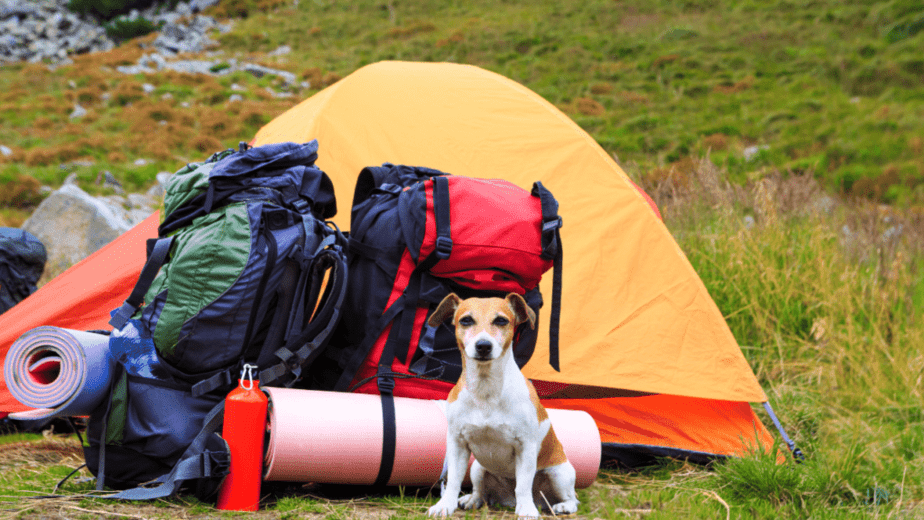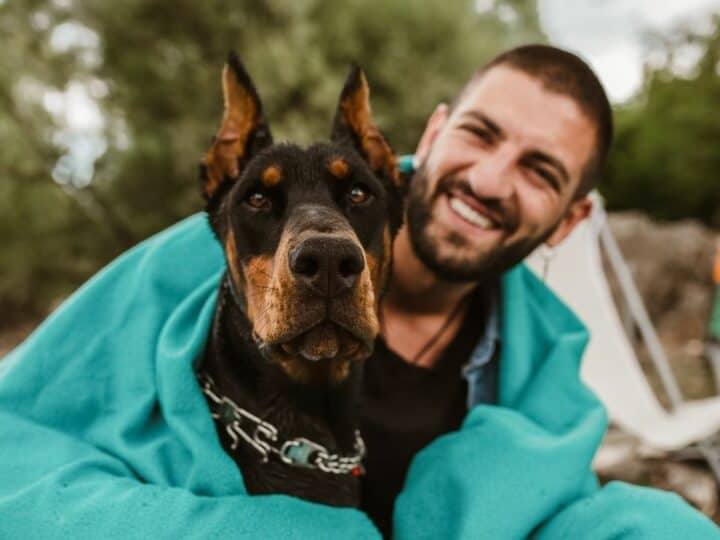Dogs generally have a greater tolerance for cold weather than humans.
Even so, a dog can still get cold at some point. Their natural fur coat only goes so far.
Table of Contents
How to Keep a Dog Warm Camping
Keep the dog inside the tent or camper with you. Some breeds prefer colder temperatures and are even more comfortable when we are chilled. Some dogs are not as tolerant of cold weather, and a lot depends on whether the dog is used to living indoors or outdoors. If you’re cold, your canine is probably cold, too.
Dogs and Camping
When camping we are more in the dog’s natural habitat, which is outdoors. Dogs have a fur coat so they’re better at handling lower temperatures.
Yet, it doesn’t mean they cannot get freezing cold, though. Just as it is true with humans, there are a lot of differences between individual breeds of dogs.
Some dogs have thin hair, which can be long or short. Other dogs have thick hair and some even have what amounts to two coats.
The thickness of the hair has a lot to do with how much cold weather a dog can stand.
Dogs that are used to staying indoors may have less tolerance for cold weather, even if their coat would normally make them better able to handle lower temperatures.
Dogs are not able to tell you if they are too cold. One simple way of telling is to put your hand on the dog’s shoulder and press it firmly.
If a dog is too cold, you will feel some shaking or shuddering. If you don’t feel that, the dog is at least relatively comfortable.
The Solution

The simple answer to making sure your dog does not get too cold, is to keep the dog with you inside your tent or camper.
If you are camping under the stars, try to get the dog to sleep between two people.
Especially if the dog is used to staying indoors, you should keep her inside the tent with you.
The dog will be more susceptible to colder temperatures if she has not been exposed to cold a lot, which is also true for people.
Another reason to keep the dog inside with you is to keep the dog from being bothered by wild animals. During the night, wild animals roam around looking for food.
Generally, these are small animals like raccoons. Your dog will notice them, and will likely start barking.
The canine could even end up fighting with a wild animal. Keeping the dog warm is the main reason to keep him inside with you, but keeping him from distractions and dangers is also a good reason.
Bring extra blankets or bedding for the dog. High protein food is even more important when camping, to keep the dog warm and to keep their energy level up while being more active than usual.
Other Activities
Camping involves more than sleeping. It is also important to consider your dog’s comfort while doing other activities while camping.
Keeping your dog dry goes a long way in keeping her from getting too cold. Once the fur gets wet, it does not insulate the dog as well, so a dog can get cold once it gets wet.
The fur itself will repel water to some degree, but once it gets too wet it will not work as well.
Keep some towels on hand if there is rain or snow. You may not be able to keep the dog dry if you are out on a long hike, but you can dry the dog once you get back to the campsite.
Even if there is no rain, avoid areas that are wet. Try to keep the dog from wading in a stream, but if it is cold they are not likely to do that on their own anyway.
If your dog does not have a high tolerance for cold for whatever reason, consider getting them a sweater. If you do this, get the dog used to having something on it before going on the camping trip.
Dogs often don’t like change, so they may not like a sweater if they have never had one on before.
Consider the dog’s feet as well. In summer, dogs sweat through their paws.
They can handle walking on things we might not like walking on in bare feet, but they are still sensitive.
Avoid walking in the snow, or in areas where the dog’s feet may get wet. In summer, that would feel nice for the dog, but in winter it will contribute to the dog getting too cold.
Staying active is another good answer to how to keep dogs warm camping. While you want to avoid rain and snow, take some walks and play with your dog a lot when it is cold.
That builds up their body temperature, and the fur will keep them insulated for a long time.
If you are camping, you are probably in a remote area. This time’s good for giving your dog some freedom. Let them run around a lot during the day, maybe even let them do what they want.
If there are no other campers around, there is no reason to restrict your dog’s movements. Don’t let him go so far away that you cannot locate him though.
But a dog who is staying active will not be as likely to get too cold.
Frequently Asked Questions about How to Keep a Dog Warm Camping
How much cold can dogs take?
Dogs are generally fine above 50 degrees Fahrenheit or so. If it gets into the 40s, ensure the dog’s comfortable. If it gets below freezing, it is too cold for the dog to be outside for a long period without some protection. If you feel cold, your dog’s probably cold as well.
Why do dogs get cold when they have a natural fur coat?
The fur keeps them insulated to some degree. The dog will likely not get as cold as quickly as you do, but at some point, it is too cold even for the fur to protect it. When it comes to weather, dogs may have more tolerance than humans do, but they still get too cold or too hot just like we do.
What signs do dogs show if they’re too cold?
A simple way is to touch the dog firmly and see if it is shuddering or shaking. You have to feel to see if they are shaking. Another sign of them being too cold is when they are moving around a lot more than usual or shaking themselves a lot.

